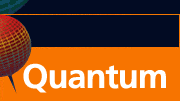CONTACTS
- Coordinator
Diego Dalvit
-
Quantum Lunch Location:
T-Division Conference Room, TA-3,
Building 123, Room 121
 |


Quantum Institute: Visitor Schedule
The Quantum Lunch is regularly held on Thursdays in the Theoretical Division Conference Room, TA-3, Building 123, Room 121.
For more information, contact Diego Dalvit.
June 14, 2007
12:30 PM
Carlo Ottaviani,
University of Barcelona
Quantum Phase Gate Operation Based on Nonlinear Optics: Semiclassical and Quantum Analysis
Abstract
Large non linear effects are usually accompanied by a large increase of the absorption. This fact makes classical nonlinear devices not useful for the purposes of the rapid developing fields of Quantum Computation and Quantum Information (QC&QI). Strong absorption process results in a complete loss of the information represented by the quantum state of the photons. After the recent experimental realization of slowed down light, Electromagnetically Induced Transparency (EIT) has experienced a revival due to the possible application to QC and QI. In this talk I will show how multilevel atomic schemes, driven into EIT configurations, allow the implementation of a conditional dynamics between traveling photons based on giant non-linear Kerr interaction, also at low light level. Such a dynamics is useful for the implementation of a Quantum Phase Gate. Two different operating regimes are considered, the semi-classical and the quantized regime. In the semi-classical regime, the dispersive properties of the schemes are analyzed in detail, and the conditions leading to group velocity matching for two of the light fields are identified. In the quantized regime, two light fields are treated as quantum fields, They undergo cross-phase modulation, and the conditional phase accumulation as well the Fidelity of the gate operation are evaluated. The existence of a trade off, between these two quantities, will emerge in the steady state regime. Nonetheless, a satisfactory gate performance is still found to be possible in the transient regime, corresponding to a fast gate operation. An experimental realization, with present technology, is proposed.
|


